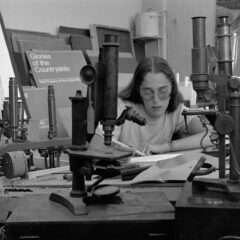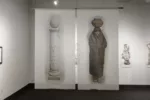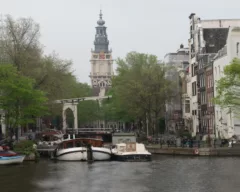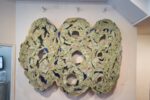By Virginia Maksymowicz and Blaise Tobia
This trip to China was different in many respects from our first, in 2008: One of us was participating in an exhibition; our travels were entirely self- directed; and half of our trip took place in the huge Hong Kong-Shenzhen-Guangzhou urban continuum that is home to about 120 million people. (Read Blaise and Virginia’s 2008 post.)
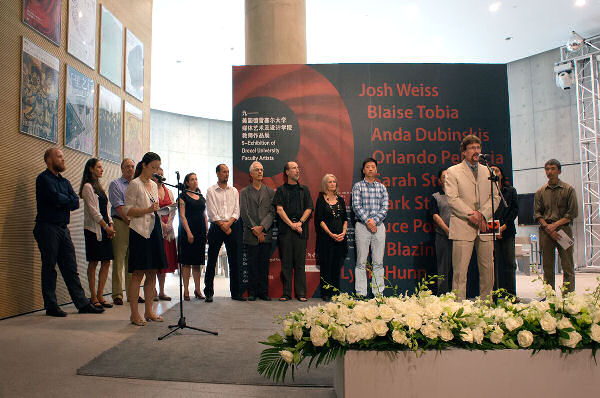
The exhibition in which Blaise participated was a show of nine studio faculty members of Drexel’s Art & Art History Department, aptly titled 9 (partly because arabic numbers need no translation in China). It took place at the Museum of the Central Academy of Fine Art in Beijing (CAFA), widely regarded as the most prestigious art school in China, even by the faculty of other top art schools, who are envious of its government support. “Museum” is an appropriate term for the freestanding, architecturally distinctive structure, which seems to have at least as much exhibition space as the New Museum in NYC. It is independently run, although it sees its program as supportive of the educational mission of CAFA.

At the opening of 9, we ran into Marshall Weber from the Booklyn Artists Alliance, whom Virginia knows from his visit to Franklin & Marshall College where she teaches. It turned out that he was at CAFA co-curating an artist-made book show, “Diamond Leaves,” with artist Xu Bing, who is now Vice-President of CAFA (and who had been a visiting artist at F&M back in 2006).

The famous “798 Art District” of Beijing is even larger and busier than it was in 2008. Some sources now put it among the top tourist attractions in Beijing (this despite the fact that it is far from center city and not well-served by public transit). Unfortunately, bigger and more popular doesn’t necessarily translate into better. Boutiques and souvenir shops now outnumber the galleries, and sometimes the distinction is ambiguous. In NYC terms, although it remains the Chelsea equivalent, it seems to be following the same path as SoHo. The most serious galleries include 798 Space and 798 Photo, Long March (which had one of the more professional and interesting shows of sculpture by Liu Wei), an outpost of Pace Gallery, and the Ullens Center for Contemporary Art (UCCA), which had one of the best high-tech multimedia shows we’ve seen anywhere (and all of the exhibitions were actually operational!).
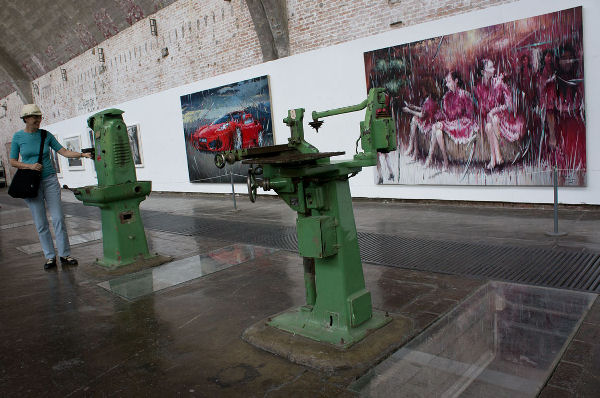
Even a bit further out is the Caochangdi district, which has some newer, hipper, and/or more cutting-edge spaces. Again in NYC terms, it’s Beijing’s Long Island City. Three Shadows Photography Art Centre is large and beautiful (founded by photographers RongRong and Inri, and designed by Ai Wei Wei), and is regarded among the top photo spaces globally. It was showing off its non-commercial orientation by dedicating all of its space to an exhibition of photographs by Che Guevara, complete with a simulacrum of 1950s Havana in the courtyard for opening night. We were brought there by Michael Cherney, an American photographer who has been living in Beijing for over twenty years, who was able to give us some knowing insights into the Beijing art scene.
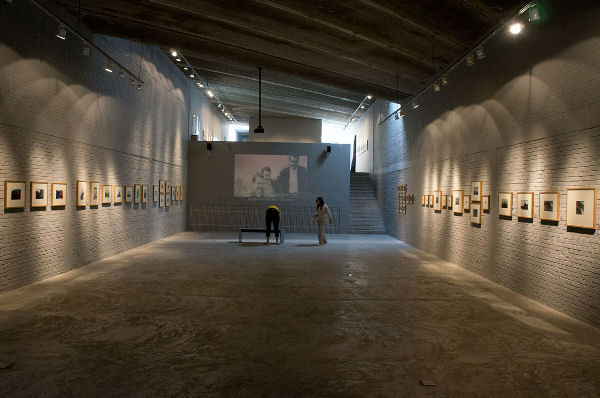

There are also several other new art areas, including the Railway District. One of the galleries there, Imagine, offers an international residency for artists to live and work in China.
We did attend one very official and prestigious art event: the opening of an exhibition at the National Art Museum of China. The ceremony was very long and formal, made more so by the time needed for translation, ending with the cutting of red ribbons suspended between large bouquets of red roses and the subsequent entry into the exhibition spaces. The show, co-produced by Oxford University, featured the research of British art historian Michael Sullivan, who pioneered the study of modern art in China. Unfortunately for us, it was a very text-heavy show and none of the text had been translated from Chinese into English!
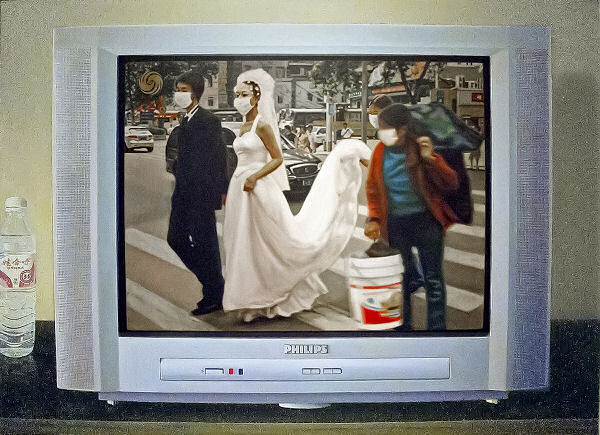
Besides the Sullivan show, we managed to see a very interesting exhibition, Be Memorized, by artist Chen Xi. Through both an installation of discarded TVs and a series of oil paintings of television screens, she encapsulated the collective Chinese national memory of news events ranging from the September 11 attacks in the U.S. to the SARS crisis in China.
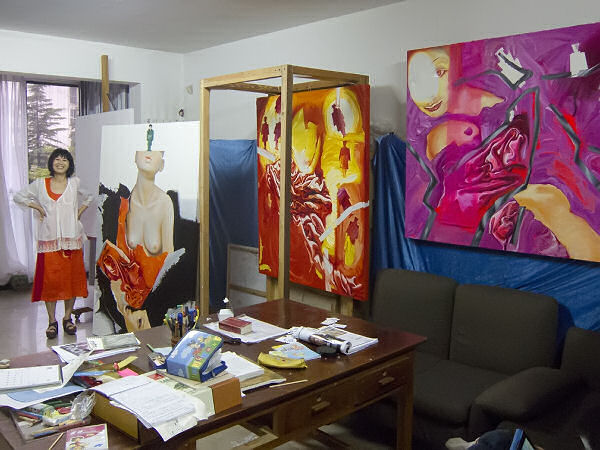
We also had a delightful experience visiting two artists’ studios. The first was that of Yan Yinhong, whose large self portrait had been a centerpiece of the Ink/Not Ink exhibition at Drexel in 2009. Her paintings address trying to balance motherhood, family issues, and political struggles with her life as an artist. Next, we saw the studio of Chen Changfan, a still-active artist in his early seventies. In 1989, he was named one of the top ten photographers in the world by Time magazine, and in 2007 he had an extensive show at the Museum of Fine Arts in Houston. Although he now has some digital cameras, his main work—a lifelong documentation of the Great Wall—continues with amazing, personally designed large wooden view cameras, one of which takes a piece of film about ten by twenty inches. He has just moved into a gigantic new studio on the periphery of Beijing, in a “village” that looks like an industrial park but was planned and built specifically as artist spaces. [To be continued. Look for Part 2 of Blaise and Virginia’s trip to China this weekend.]
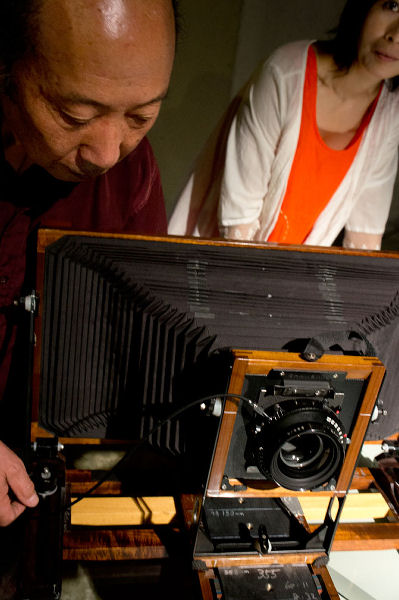
Virginia Maksymowicz is a sculptor and teaches in the Art & Art History Department at Franklin & Marshall College. Recent exhibitions have been at the Delaware Center for Creative Arts in Wilmington and BronxArtSpace in NYC. Blaise Tobia is a fine art photographer, teaching in the Art & Art History Department at Drexel University. Besides the “9” show in Beijing, his most recent exhibition was at Rowan University. He is looking forward to an exhibition at O.K. Harris Gallery in NYC in September, 2013. View their work at tandm.us.


